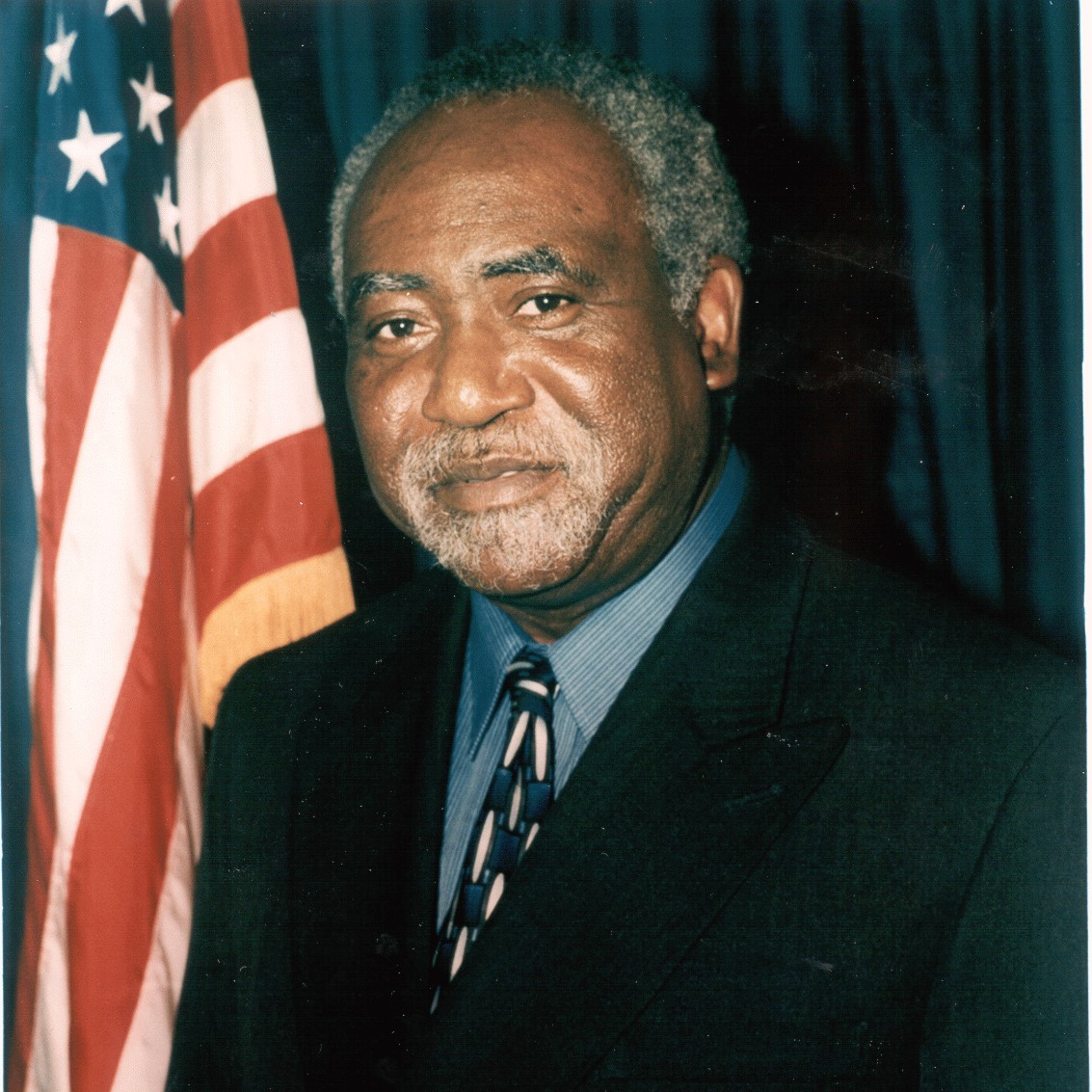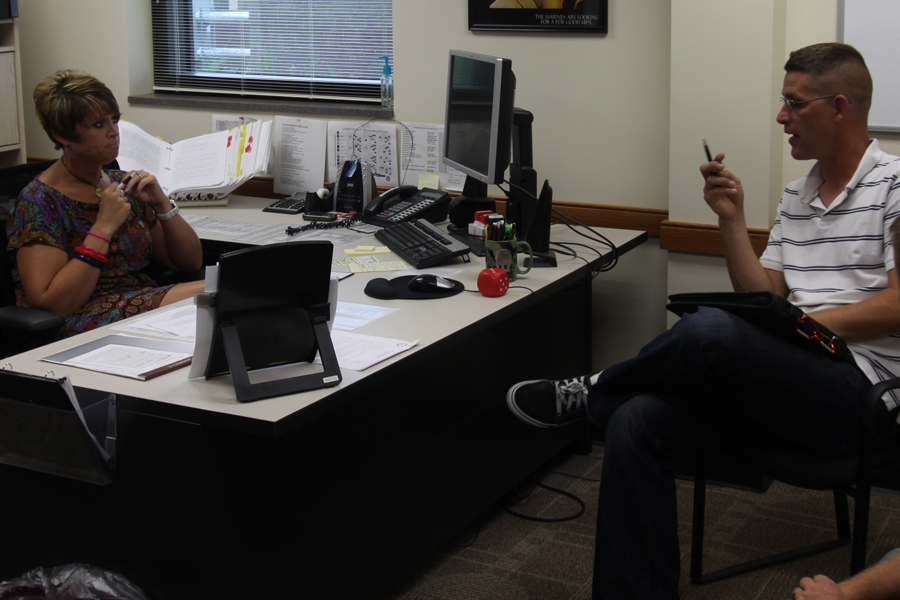|
Danny K. Davis
Daniel K. Davis (born September 6, 1941) is an American politician who is the U.S. representative from , elected in 1996. The district serves much of western Chicago, including the Loop. It also includes several of Chicago's inner western suburbs, such as Bellwood, Oak Park, and River Forest. Davis is a Democrat, a member of the Congressional Black Caucus, and a former member of the Democratic Socialists of America (DSA). He was one of 31 U.S. representatives to vote against counting Ohio's electoral votes in the 2004 presidential election. Early life, education, and career Davis was born in Parkdale, Arkansas, and educated at Arkansas Agricultural, Mechanical and Normal College (now the University of Arkansas at Pine Bluff; B.A. in history, 1961), Chicago State University (M.S. in guidance, 1968), and the Union Institute & University in Cincinnati, Ohio (Ph.D. in public administration, 1977). Davis worked as a government clerk, a high school teacher, executive direct ... [...More Info...] [...Related Items...] OR: [Wikipedia] [Google] [Baidu] |
Illinois
Illinois ( ) is a state in the Midwestern United States. Its largest metropolitan areas include the Chicago metropolitan area, and the Metro East section, of Greater St. Louis. Other smaller metropolitan areas include, Peoria and Rockford, as well Springfield, its capital. Of the fifty U.S. states, Illinois has the fifth-largest gross domestic product (GDP), the sixth-largest population, and the 25th-largest land area. Illinois has a highly diverse economy, with the global city of Chicago in the northeast, major industrial and agricultural hubs in the north and center, and natural resources such as coal, timber, and petroleum in the south. Owing to its central location and favorable geography, the state is a major transportation hub: the Port of Chicago has access to the Atlantic Ocean through the Great Lakes and Saint Lawrence Seaway and to the Gulf of Mexico from the Mississippi River via the Illinois Waterway. Additionally, the Mississippi, Ohio, and Wabas ... [...More Info...] [...Related Items...] OR: [Wikipedia] [Google] [Baidu] |
United States House Of Representatives
The United States House of Representatives, often referred to as the House of Representatives, the U.S. House, or simply the House, is the lower chamber of the United States Congress, with the Senate being the upper chamber. Together they comprise the national bicameral legislature of the United States. The House's composition was established by Article One of the United States Constitution. The House is composed of representatives who, pursuant to the Uniform Congressional District Act, sit in single member congressional districts allocated to each state on a basis of population as measured by the United States Census, with each district having one representative, provided that each state is entitled to at least one. Since its inception in 1789, all representatives have been directly elected, although universal suffrage did not come to effect until after the passage of the 19th Amendment and the Civil Rights Movement. Since 1913, the number of voting representative ... [...More Info...] [...Related Items...] OR: [Wikipedia] [Google] [Baidu] |
1990 Cook County, Illinois Elections
The Cook County, Illinois, general election was held on November 6, 1990. Primaries were held March 20, 1990. Elections were held for the offices of Assessor, Clerk, Sheriff, State's Attorney, Cook County Superintendent of Education Service Region, Treasurer, President of the Cook County Board of Commissioners, all 17 seats of the Cook County Board of Commissioners, both seats of the Cook County Board of Appeals, 3 seats on the Water Reclamation District Board, and judgeships on the Circuit Court of Cook County. Election information 1990 was a midterm election year in the United States. The primaries and general elections for Cook County races coincided with those for federal ( Senate and House) and those for state elections. Voter turnout Primary election Turnout in the primaries was 36.93%, with 985,614 ballots cast. Chicago saw 607,899 ballots cast, and suburban Cook County saw 30.24% turnout (with 377,715 ballots cast). General election The general election ... [...More Info...] [...Related Items...] OR: [Wikipedia] [Google] [Baidu] |
Public Administration
Public Administration (a form of governance) or Public Policy and Administration (an academic discipline) is the implementation of public policy, administration of government establishment (public governance), management of non-profit establishment ( nonprofit governance), and also a subfield of political science taught in public policy schools that studies this implementation and prepares civil servants, especially those in administrative positions for working in the public sector, voluntary sector, some industries in the private sector dealing with government relations and regulatory affairs, and those working as think tank researchers. As a "field of inquiry with a diverse scope" whose fundamental goal is to "advance management and policies so that government can function." Some of the various definitions which have been offered for the term are: "the management of public programs"; the "translation of politics into the reality that citizens see every day";Kettl, D ... [...More Info...] [...Related Items...] OR: [Wikipedia] [Google] [Baidu] |
Cincinnati, Ohio
Cincinnati ( ) is a city in the U.S. state of Ohio and the county seat of Hamilton County. Settled in 1788, the city is located at the northern side of the confluence of the Licking and Ohio rivers, the latter of which marks the state line with Kentucky. The city is the economic and cultural hub of the Cincinnati metropolitan area. With an estimated population of 2,256,884, it is Ohio's largest metropolitan area and the nation's 30th-largest, and with a city population of 309,317, Cincinnati is the third-largest city in Ohio and 64th in the United States. Throughout much of the 19th century, it was among the top 10 U.S. cities by population, surpassed only by New Orleans and the older, established settlements of the United States eastern seaboard, as well as being the sixth-most populous city from 1840 until 1860. As a rivertown crossroads at the junction of the North, South, East, and West, Cincinnati developed with fewer immigrants and less influence from Europe than ... [...More Info...] [...Related Items...] OR: [Wikipedia] [Google] [Baidu] |
Career Counseling
Career counseling is a type of advice-giving and support provided by career counselors to their clients, to help the clients manage their journey through life, learning and work changes (career). This includes career exploration, making career choices, managing career changes, lifelong career development and dealing with other career-related issues. There is no agreed definition of career counseling worldwide, mainly due to conceptual, cultural and linguistic differences. However, the terminology of 'career counseling' typically denotes a professional intervention which is conducted either one-on-one or in a small group. Career counseling is related to other types of counseling (e.g. marriage or clinical counseling). What unites all types of professional counseling is the role of practitioners, who combine giving advice on their topic of expertise with counseling techniques that support clients in making complex decisions and facing difficult situations. Terminology There is con ... [...More Info...] [...Related Items...] OR: [Wikipedia] [Google] [Baidu] |
History
History (derived ) is the systematic study and the documentation of the human activity. The time period of event before the invention of writing systems is considered prehistory. "History" is an umbrella term comprising past events as well as the memory, discovery, collection, organization, presentation, and interpretation of these events. Historians seek knowledge of the past using historical sources such as written documents, oral accounts, art and material artifacts, and ecological markers. History is not complete and still has debatable mysteries. History is also an academic discipline which uses narrative to describe, examine, question, and analyze past events, and investigate their patterns of cause and effect. Historians often debate which narrative best explains an event, as well as the significance of different causes and effects. Historians also debate the nature of history as an end in itself, as well as its usefulness to give perspective on the problems of th ... [...More Info...] [...Related Items...] OR: [Wikipedia] [Google] [Baidu] |
2004 United States Presidential Election
The 2004 United States presidential election was the 55th quadrennial presidential election, held on Tuesday, November 2, 2004. The Republican ticket of incumbent President George W. Bush and his running mate incumbent Vice President Dick Cheney were elected to a second term, defeating the Democratic ticket of John Kerry, a United States senator from Massachusetts and his running mate John Edwards, a United States senator from North Carolina. At the time Bush's popular vote total was the most votes ever received by a presidential candidate, a total that has since been surpassed; additionally, Kerry's total was the second most. Bush also became the only incumbent president to win re-election after losing the popular vote in the previous election. Bush and Cheney were renominated by their party with no difficulty. Former Vermont Governor Howard Dean emerged as the early front-runner in the 2004 Democratic Party presidential primaries, but Kerry won the first set of primaries ... [...More Info...] [...Related Items...] OR: [Wikipedia] [Google] [Baidu] |
Electoral College (United States)
The United States Electoral College is the group of presidential electors required by the Constitution to form every four years for the sole purpose of appointing the president and vice president. Each state and the District of Columbia appoints electors pursuant to the methods described by its legislature, equal in number to its congressional delegation (representatives and senators). Federal office holders, including senators and representatives, cannot be electors. Of the current 538 electors, an absolute majority of 270 or more ''electoral votes'' is required to elect the president and vice president. If no candidate achieves an absolute majority there, a contingent election is held by the United States House of Representatives to elect the president, and by the United States Senate to elect the vice president. The states and the District of Columbia hold a statewide or districtwide popular vote on Election Day in November to choose electors based upon how they have p ... [...More Info...] [...Related Items...] OR: [Wikipedia] [Google] [Baidu] |
2004 United States Presidential Election In Ohio
The 2004 United States presidential election in Ohio took place on November 2, 2004, and was part of the 2004 United States presidential election. Voters chose 20 representatives, or electors to the Electoral College, who voted for president and vice president. Ohio was won by incumbent President George W. Bush by a 2.10% margin of victory. Prior to the election, most news organizations considered the Buckeye state as a swing state. The state's economic situation gave hope for John Kerry. In the end, the state became the deciding factor of the entire election. Kerry conceded the state, and the entire election, the morning following election night, as Bush won the state and its 20 electoral votes. The close contest was the subject of the documentary film '' ...So Goes the Nation'', the title of which is a reference to Ohio's 2004 status as a crucial swing state. Had Kerry won the state, he would have won the presidency with 272 electoral votes despite losing the popular vote, t ... [...More Info...] [...Related Items...] OR: [Wikipedia] [Google] [Baidu] |
Congressional Black Caucus
The Congressional Black Caucus (CBC) is a caucus made up of most African-American members of the United States Congress. Representative Karen Bass from California chaired the caucus from 2019 to 2021; she was succeeded by Representative Joyce Beatty from Ohio as chair. The caucus has historically been non-partisan; however, with Republican Representative Byron Donalds being blocked from joining in 2021, that status has been made unclear. History Founding The predecessor to the caucus was founded in January 1969 as the Democratic Select Committee by a group of black members of the House of Representatives, including Shirley Chisholm of New York, Louis Stokes of Ohio and William L. Clay of Missouri. Black representatives had begun to enter the House in increasing numbers during the 1960s, and they had a desire for a formal organization. Further, Congressional redistricting and other factors in the wake of the Civil Rights Movement resulted in the number of black Congressmember ... [...More Info...] [...Related Items...] OR: [Wikipedia] [Google] [Baidu] |
River Forest, Illinois
River Forest is a suburban village adjacent to Chicago in Cook County, Illinois, U.S. Per the 2020 census, the population was 11,717. Two universities make their home in River Forest, Dominican University and Concordia University Chicago. The village is closely tied to the larger neighboring community of Oak Park. There are significant architectural designs located in River Forest such as the Winslow House by Frank Lloyd Wright. River Forest has a railroad station with service to Chicago on Metra's Union Pacific/West Line. History The Native American history of the area is closely tied to the Des Plaines River and includes Menominee and Chippewa settlements near what is now the Desplaines Avenue and Roosevelt Road forest preserves of Cook County. The Menominees would eventually be driven out by the Potowatomi Nation in 1810. The establishment of a steam sawmill on the east bank of the Des Plaines River in 1831, and the proximity to Chicago, were some of the reasons that ... [...More Info...] [...Related Items...] OR: [Wikipedia] [Google] [Baidu] |



.jpg)

